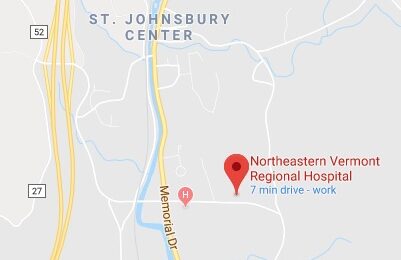Did You Know that Chewing Tobacco Can also Cause Cancer?
ST. JOHNSBURY, VT (August 11, 2020) – If you use chewing tobacco and recently heard that this can cause cancer, that is correct. Luckily Northeastern Vermont Regional Hospital (NVRH) has the resources to help you quit.
Smokeless tobacco, often called chewing or spit tobacco, is placed in the cheek and/or between the gum and cheek. The tobacco juices are then either swallowed or spit out. Many people think that this is a safer, healthier alternative to smoking cigarettes. According to the American Cancer Society, “Manufacturers often imply or even claim that spit or smokeless tobacco can help people quit smoking. A lot of people believe and try this. But there’s no proof that any smokeless tobacco products help smokers quit smoking.”
In fact, smokeless tobacco may actually encourage young people to start smoking and discouraging those who wish to quit. The American Lung Association references a U.S. Food and Drug Administration report, which concludes that tobacco products that dissolve could actually increase overall tobacco use because they may encourage youth to start using and discourage current smokers from quitting.
“There’s this misconception that if you use tobacco in a different form, it won’t be as bad for you,” NVRH Tobacco Treatment Specialist Lynn Goulding said. “But the tobacco you put in your mouth still has chemicals and metals that will negatively impact your health. You’re just putting those chemicals into your body in a different way.”
According to the Centers for Disease Control and Prevention (CDC), “Many smokeless tobacco products contain cancer-causing chemicals… The amount of these chemicals varies by product. The higher the levels of these chemicals, the greater the risk for cancer.” Examples of chemicals found in tobacco include a radioactive element found in the fertilizer, a variety of chemicals that are formed when tobacco is cured and metals such as arsenic, lead, nickel, and mercury.
Although smokeless tobacco causes cancer of the mouth, esophagus and pancreas, it can also cause other unpleasant side effects, such as an increased heart rate, high blood pressure, bad breath, gingivitis, staining of teeth, and mouth sores, ulcers and cavities.
If you are planning to quit, it is important to plan ahead. Be prepared, you will feel the urge to use tobacco, but it will pass. The American Cancer Society suggests using the four Ds to help fight the urge:
- Delay for 10 minutes. Repeat if needed.
- Deep breaths. Close your eyes, slowly breathe in through your nose and out through your mouth.
- Drink water slowly, sip by sip.
- Do something else.
There are many options to support you and research shows that using additional supports can help you be successful. Planning for the actual quit date is one important element so that when you do decide to quit, you have the necessary steps in place.
Ready to quit? Visit www.802quits.org, call 1-800-Quit-Now or call NVRH at 748-7395 to sign up for our next four week online Freshstart® class.
Sitemap | Privacy Policy | Site developed by Flek, Inc.
Northeastern Vermont Regional Hospital © 2020

